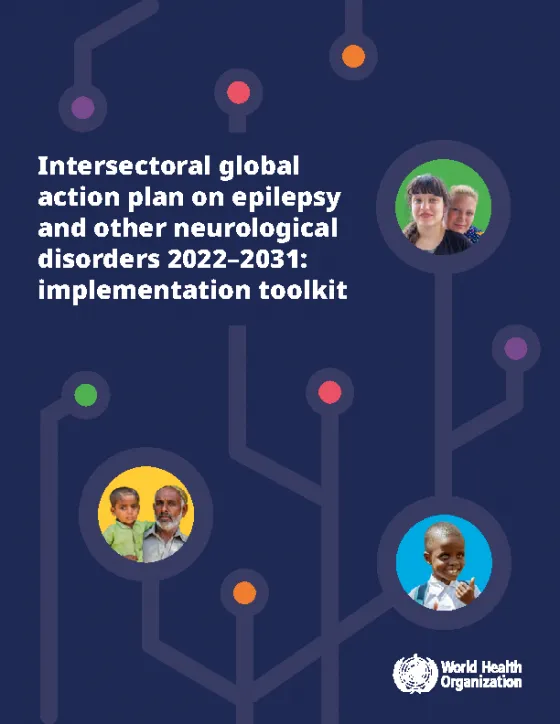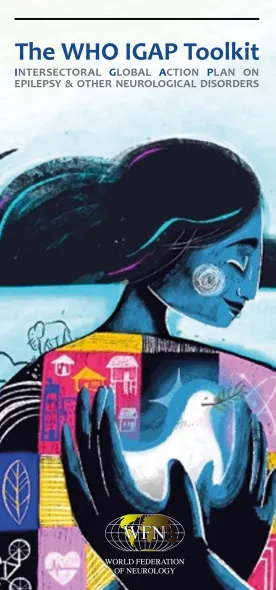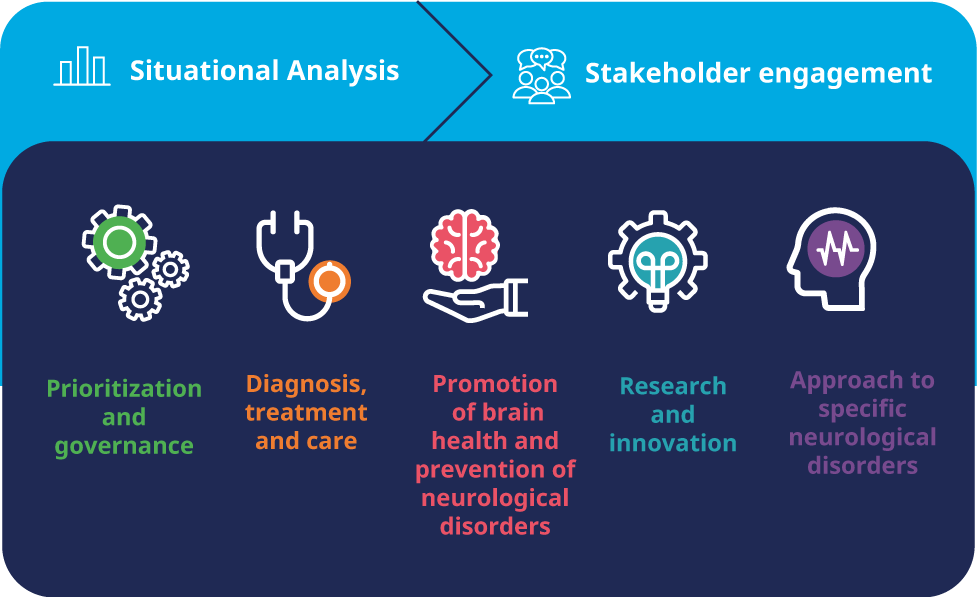 The WHO IGAP Implementation Toolkit
The WHO IGAP Implementation Toolkit
The implementation of IGAP by countries requires a practical approach, which will look different in every country according to the needs of the population and the context.
The IGAP toolkit accompanies and operationalizes the action plan. The toolkit complements the development of national plans and strategies for neurological disorders by listing actions and suggesting tools and resources that can be utilised to realise fully the vision of IGAP.
The implementation toolkit is intended to be a “go-to” resource for those involved in IGAP implementation in countries. It lists actions and suggests tools and resources that can be utilized to realize fully the vision of IGAP and progress towards achieving the 10 global targets of the action plan. It is primarily intended for use by policy-makers at national and subnational levels as well as programme managers and service planners across various sectors such as health, social services, education, environment, finance, employment, justice and housing. The toolkit is also relevant for academics and the donor and development community as a blueprint for meeting the targets in the action plan. People with neurological disorders, their carers and families and associations that represent them are an essential part of the implementation process and are placed at the heart of all actions.
How to implement IGAP?
The IGAP toolkit, developed by WHO with financial contributions from WFN, will support Ministries of Health and other stakeholders including civil society and professional associations to put into motion the strategic objectives of the IGAP.
The toolkit consists of practical, step-by step modules to support implementation of the action plan and has 90 unique tools and resources from WHO and partner organizations to help stakeholders customize IGAP actions to their context and take concrete steps for achieving the IGAP targets.
Following the structure of the 5 strategic objectives of IGAP, the toolkit lists specific intersectoral actions to help stakeholders develop their national implementation plans and gives step-by-step directions.
All actions taken to achieve the IGAP targets must have at heart people with neurological disorders, their opinions, perspectives and best interests.
Integrated approach to neurological disorders
Who should use the Toolkit?
The toolkit is intended primarily for for use by policy-makers at national and subnational levels as well as programme managers and service planners across various sectors such as health, social services, education, environment, finance, employment, justice and housing.
Stakeholders in government roles are central to setting in action the implementation of IGAP – e.g. in planning health and social policies to support people with neurological disorders and their carers and revising outdated legislation or formulating strategies for enhancing the skills of the health workforce.
The actions described in the toolkit will have relevance to the work of frontline practitioners such as doctors, nurses, community health workers, teachers, educators and social workers.
The toolkit is also relevant to other implementation partners such as civil society organizations, professional societies, advocacy groups, academic institutions, donors and funders of programmatic work, where some actions such as awareness-raising campaigns, carer education initiatives, or collaboration for better neurological research can be enhanced with their involvement.
Most importantly, the toolkit is designed with input from people with neurological disorders and their carers, placing them at the heart of all actions.
How should the toolkit be used?
Structure of the toolkit |
The toolkit is organized around areas for action which reflect the grouping of strategic objectives and action areas of IGAP. It is intended to help countries to plan their approach to neurological disorders and brain health in line with IGAP in a practical way and develop their customized plans for implementation. Implementers are encouraged to consider the context of health services as a whole, since optimizing care for neurological disorders depends on integration into wider primary health care-(PHC-)oriented services.
To prepare for implementing IGAP at the national or subnational level using an integrated approach to neurological disorders, it is recommended to start with stakeholder mapping and engagement and a situational analysis, as described in the relevant sections. The sections on prioritization and governance, diagnosis, treatment and care, promotion and prevention, and research and innovation are each divided into topics which follow the structure of the IGAP and suggest specific steps to be taken in thematic areas.
While the toolkit is relevant to all neurological disorders, the section on the approach to specific neurological disorders lays out considerations around five neurological conditions that contribute the most DALYs, showing how addressing priority conditions in a particular setting will support the whole framework of improving services for neurological disorders.
Finally, the section on monitoring and evaluation describes how to plan and resource the monitoring framework so that the effectiveness of implementation efforts can be measured, and actions can be refined to maximize impact.
Within each of these sections, the relevant core concepts and importance of issue are clarified. A comprehensive list of recommended actions supports a systematic and practical approach to achieving IGAP targets. Implementers are provided with links to tools and resources which have global relevance and can be adapted to the specific situation in individual countries. Throughout the toolkit, case scenarios and good practices illustrate how incremental changes can lead to significant improvements in neurological care.
There is no single best way to carry out IGAP implementation and the process will look different in every country, reflecting the unique national context, health system characteristics, and priority needs and challenges. The toolkit is designed to allow actions to be customized according to the context of the country, allowing for recognition of advances in neurological disorder care that have already been made in that setting. While all listed actions and steps are useful for a comprehensive response, implementers may initially focus on the most essential ones in settings with limited resources and then expand these to cover all actions as more resources become available. This flexibility will empower countries to navigate the challenges, seize the opportunities and make the IGAP vision a reality.










